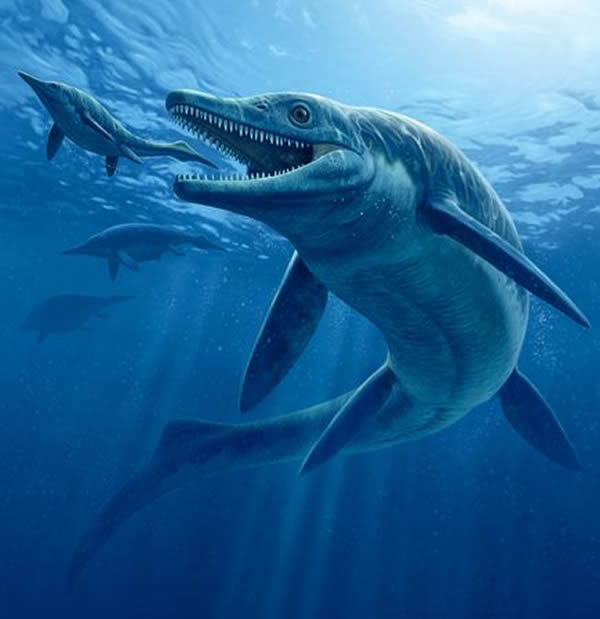Bus-Size Sea Monster Found, Took On Prey Its Own Size
T. saurophagis, seen in an artist's illustration, was at least 28 feet (8.6 meters) long.
A new species of prehistoric sea monster unearthed in Nevada chowed down on prey its own size—the first ocean predator that evolved to do so, a new study says.
Thalattoarchon saurophagis—which translates to "lizard-eating sovereign of the sea"—was at least 28 feet (8.6 meters) long and lived about 244 million years ago during the Triassic period, said study co-author Nadia Fröbisch of Berlin's Museum of Natural History.
The bus-size beast was an early ichthyosaur, part of a group of reptiles that prowled the world's seas during the dinosaur era.
The Thalattoarchon fossil, partially excavated in 1998, was unusually well preserved, including the skull, fins, and entire vertebral column. "It is pretty amazing, particularly for an animal this size," said Fröbisch, who is also a National Geographic explorer.
But more compelling to Fröbisch were reports of the animal's fearsome teeth, briefly spotted on the last day of the 1998 expedition.
So, in 2010, Fröbisch and colleagues returned to the Nevada site to dig up the rest of the fossil. In the process, the scientists discovered an enormous skull and jaw-laden with large, sharp teeth that are big enough to carve up other large marine reptiles, she said.
Thalattoarchon's modern counterparts would be orcas and great white sharks, both of which will take on similar-size prey.
Nature Finds a Way
The sea monster's discovery also shows how ecosystems can bounce back from even the most extreme events, Fröbisch noted.
"This animal occurs only eight million years after the biggest mass extinction event in Earth's history, the Permian extinction, which literally wiped out up to 95 percent of all the species in the ocean," Fröbisch explained. "The ocean was a pretty empty place afterward."
But not for long—the fossil record shows that species returned quickly. The presence of a top predator like Thalattoarchon during that time period shows that the system was intact within a relatively short time, since marine ecosystems build from the bottom of the food chain up. In other words, the monster had tons of food to eat.
"So with the appearance of Thalattoarchon we know it was complete and that it had the same structure as modern ecosystems, the same structure we've seen in place, with different players, ever since."
Despite thriving some 160 million years, Thalattoarchon and fellow ichthyosaurs went extinct for unknown reasons—leaving no living relatives.
"Toward the end of the Cretaceous, they declined more and more, and their diversity also declined—and then they finally disappeared," Fröbisch said.
The sea monster study was published in the early-electronic issue of the journal Proceedings of the National Academy of Sciences.
Brian Handwerk
for National Geographic News
Published January 7, 2013












